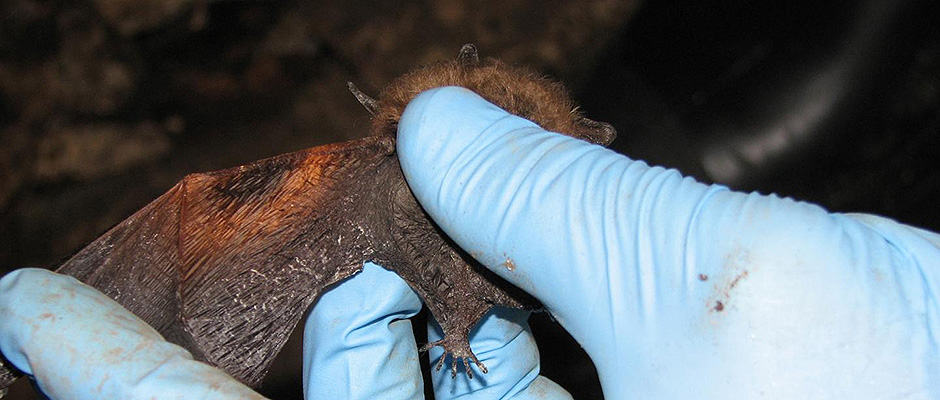Share this article
White-Nose Syndrome Better Explained
Researchers have confirmed the way a lethal fungal disease has laid waste to huge populations of North American bats.
“This model is exciting for us, because we now have a framework for understanding how the disease functions within a bat,” said Michelle Verant, a scientist with the University of Wisconsin and the U.S. Geological Survey’s (USGS) National Wildlife Health Center and the lead author of a study released in BMC Physiology. “The mechanisms detailed in this model will be critical for properly timed and effective disease mitigation strategies.”
The new study proves the previous hypothesis that white-nose syndrome — a disease caused by the fungus Pseudogymnoascus destructans (formerly Geomyces destructans) — killed bats by attacking their immune systems during hibernation when they are weakest. By comparing healthy and infected bat populations during hibernation, USGS researchers discovered that bats with the fungus used twice the energy as uninfected bats. The energy depleted in the infected bats was so great that it stops the bats from performing basic body functions during hibernations, causing bats to die from suffocation or other causes.
But the researchers also discovered that contrary to previous findings, the fungus began to cause the hibernating bats to move around more and waste energy much earlier than more serious symptoms of WNS such as wing damage became evident.
“Clinical signs are not the start of the disease — they likely reflect more advanced disease stages,” Verant said. “This finding is important because much of our attention previously was directed toward what we now know to be bats in later stages of the disease, when we observe visible fungal infections and behavioral changes.”
The researchers measured energy depletion in bats by tracking the ratio of lean tissue to fat mass. Infected bats had much less fat.
The study also found that mild wing damage in bats had more acidic blood due to increased carbon dioxide levels as well as potassium levels high enough to inhibit normal heart function.
Header Image:
This image shows wing damage from white-nose syndrome fungus in a little brown bat.
Image Credit: Kim Miller, U.S. Geological Survey








